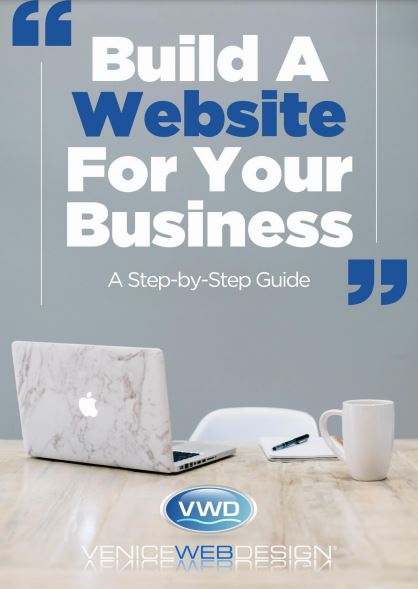Staying abreast of the curve is crucial to making a lasting impression on visitors. The traditional static websites are giving way to dynamic, interactive designs, with video content emerging as a powerful tool.
To help you visualize this in a clear image, VWD is going to explore the benefits of incorporating video content into your web design.
The Rise of Video Content
– Visual Appeal
As attention spans decrease, the need for captivating visual elements becomes paramount. Videos provide an immersive experience, capturing the audience’s attention and conveying information more effectively than text alone.
Also, it helps to amplify brand storytelling and create an emotional resonance with the audience. By merging visuals, audio, and storytelling techniques, videos can evoke strong emotions and produce a lasting impression on viewers, increasing brand engagement and driving conversions.
– Engaging Users
In the age of social media and viral content, users crave interactive experiences. Video content is shareable and tends to generate more engagement, whether through likes, comments, or shares.
It is also more memorable, as viewers are more likely to remember and recall what they saw. This can help to build brand loyalty and increase sales.
Benefits of Video Content in Web Design
– Enhancing the User Experience
Videos enhance user experience by providing dynamic and visually stimulating content. This helps in creating a memorable interaction, making visitors more likely to stay on your site.
It is also a great way to engage users and provide valuable information. It can also help build trust and credibility, as video content is more convincing than text.
– Boost in SEO Rankings
Search engines prioritize websites with engaging content. Including videos can positively impact your SEO rankings, leading to better visibility and increased organic traffic.
Incorporating videos not only enhances user experience but also extends dwell time on your site, a key metric for search engine algorithms. This boosts your website’s authority, ultimately improving SEO rankings and driving more targeted organic traffic.
– Conveying Information Effectively
Complex concepts or product features are often better communicated through videos. They allow you to convey a message concisely, keeping the audience informed and engaged.
Videos can break down complex information into easily digestible segments, making it easier for the audience to understand and retain the message. This can be particularly useful when explaining intricate processes, demonstrating product features, or showcasing step-by-step tutorials.
– Building Trust and Credibility
Seeing real faces or behind-the-scenes footage adds a personal touch to your brand. This transparency builds trust and credibility with your audience, fostering a stronger connection.
By introducing the faces behind your company, you create a sense of authenticity and establish a deeper connection with your audience. This can enhance trust and credibility, ultimately leading to greater customer loyalty and engagement.
Best Practices for Video Integration
– Optimal Video Length
Shorter videos are generally more effective, as they cater to users’ shorter attention spans. Aim for concise, impactful content to convey your message efficiently.
Include captions and subtitles to increase engagement and accessibility. Optimize your video for SEO to ensure it is found by the right people.
– Quality and Resolution
Investing in high-quality production reflects positively on your brand. Crisp visuals and clear audio contribute to a professional image.
Make sure the resolution is high enough to capture small details. Use the right colors and lighting to create a visually appealing video. Lastly, make sure to optimize your video for mobile devices.
– Strategic Placement
Place videos strategically to complement your content. Whether as a background element or a focal point, ensure it enhances the overall design without overshadowing other elements.
Consider the context and purpose of your content when deciding where and how to place videos. Use videos as a supporting element that enhances the overall design and message without overpowering or distracting from other important elements on the page.
Examples of Successful Video Integration
– E-commerce Websites
Product videos showcasing functionality or customer testimonials enhance the shopping experience, leading to higher conversion rates.
– Corporate Landing Pages
Company overviews or mission statements presented through videos create a memorable first impression, establishing a strong brand identity.
In Summary!
Incorporating video content in your web design is not just a trend; it’s a strategic move toward creating a more engaging and memorable online presence.
Venice Web Design is the only company with extensive experience in integrating eye-catching video content into web design.
Our team of experts can create engaging videos that capture the attention of your target audience. We can also optimize your website for faster loading times, making it easier for users to find the content they need.
FAQs
How Can I Optimize Video Loading Times on My Website?
To optimize video loading times, compress video files, use efficient formats, and consider lazy loading techniques.
Compressing video files reduces their file size without significantly sacrificing quality, while using efficient formats like MP4 or WebM can enhance loading speed.
Lazy loading techniques, on the other hand, allow videos to load only when they are visible on the screen, further optimizing loading times.
What Length is Ideal for Web Design Videos?
Aim for shorter videos, ideally under two minutes, to maintain audience engagement. Shorter videos are more likely to hold the attention of your audience and keep them engaged.
Studies have shown that viewers tend to lose interest in videos that exceed the two-minute mark, so it’s important to keep your content concise and impactful.
Can Video Content Improve My Website’s SEO?
Yes, search engines favor websites with engaging content, including videos, leading to improved SEO rankings.
You can measure the success of your video content by tracking metrics such as views, click-through rates, and engagement rates.
This data will help you understand how well your videos are performing and whether they are driving the desired results in terms of improved SEO rankings and increased website traffic.
Are There Any Free Tools for Creating Professional-Looking Videos?
Yes, platforms like Canva and Adobe Spark offer user-friendly tools for DIY video creation. These platforms provide a range of templates, stock footage, and editing features that allow users to create professional-looking videos without the need for advanced technical skills.
Whether you’re looking to create promotional videos, tutorials, or social media content, these tools can help you bring your vision to life.
How Can I Measure the Success of My Video Content?
Use analytics tools to track metrics like engagement, view duration, and conversion rates, and seek user feedback for valuable insights.
By using analytics tools to track metrics such as engagement, view duration, and conversion rates, you can gain valuable insights into the success of your video content.
Additionally, seeking user feedback can provide further understanding of how your videos are being received and whether they are effectively meeting the goals of your website.


